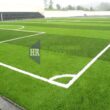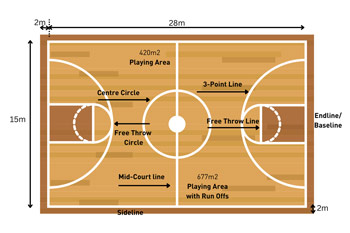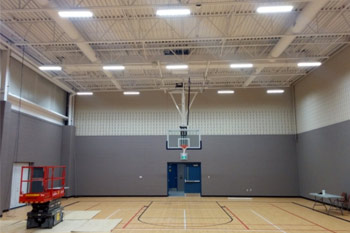
Concrete Court
In basketball, the basketball court is the playing surface, consisting of a rectangular floor, with baskets at each end. Indoor basketball courts are almost always made of polished wood, usually maple, with 3.048 meters -high rims on each basket. Outdoor surfaces are generally made from standard paving materials such as concrete or asphalt.
![Basketball court 1 OIP[1]](https://almustaqbalalsarea.com/wp-content/uploads/2020/12/OIP1.jpeg)
Benefits of Choosing Almustaqbal Alsarea
Experience and Expertise
With years of experience in the UAE and Gulf region, we have a proven track record of delivering exceptional basketball court construction projects. Our team is comprised of qualified professionals who are passionate about creating high-quality playing environments.
Basketball Courts
- Al Mustaqbal Al Sarea Company has outstanding expertise in constructing basketball courts according to the latest international standards.
- We offer comprehensive services, including infrastructure, premium acrylic and rubber granule flooring, advanced lighting services, reliable safety nets, and modern construction systems.
- Our services aim to provide an ideal environment that meets the game’s requirements while ensuring maximum comfort and safety for players.


Basketball Court Painting and Markings
Our skilled technicians ensure your court is impeccably painted with clear, consistent lines and markings that meet official FIBA (Fédération Internationale de Basketball) regulations.

Customization Basketball Court Options
We understand that your basketball court may need to reflect your unique identity. We offer a wide range of customization options, including logos, team colors, and sponsor branding.

Full-Court Construction
Our team of experienced professionals handles every aspect of your basketball court construction project, from initial planning and design to foundation preparation, surface installation, and final touches.
Contact Us Directly on WhatsApp
Have a quick question? We're here to help! Click the button below to chat with us directly on WhatsApp — we'll get back to you as soon as possible.


This is the heading
Lorem ipsum dolor sit amet, consectetur adipiscing elit. Ut elit tellus, luctus nec ullamcorper mattis, pulvinar dapibus leo.






